THE CLIMATE CHALLENGE
New Interfaces
Narrative
The player starts up the game. The player starts with the first location on the map and chooses a character. Then the player is presented with a narrative of the environmental problem in the region and introduced to the resources available through a short clip. The player enters the game world and begins to takes advice from the plants and animals that survive in the region and tries to figure out how to find the resources and how to use them to build a more adaptable and repaired ecosystem. If the player is successful, the player is then rewarded with more resources (trophies) to then attack a bigger issue in the region and so on.
Once the player has successfully finished all the challenges in the region they are transferred on to another location in the world and go through the same processes. The player is allowed to choose one previous character trait and one previously acquired resource that could help to solve issues in in the next location. If they require more they may buy the, with units (time or life). The players can exchange recourses with other players upon request. The goal is to solve as many environmental problems in regions of the world as possible. Also the major end goal is to promote awareness of climate change and in turn the players are rewarded with trophies that reflect real life movements and organization that work to to achieve similar goals.
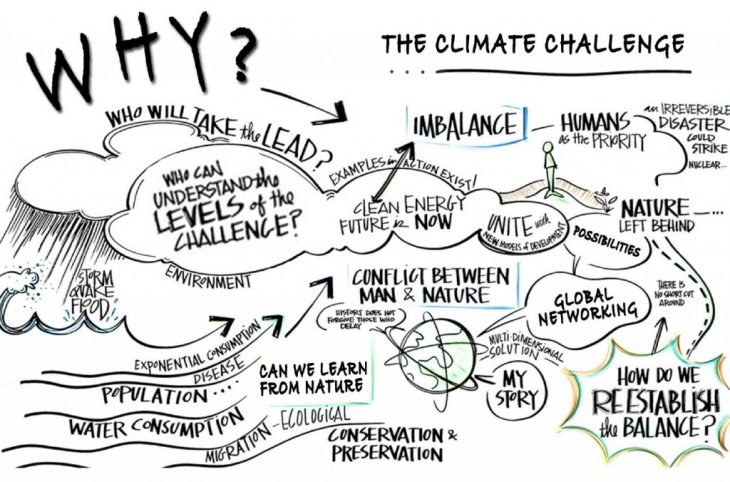
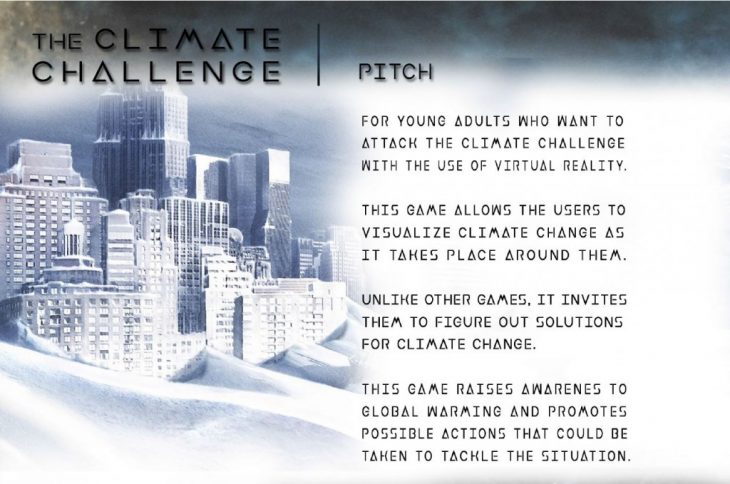
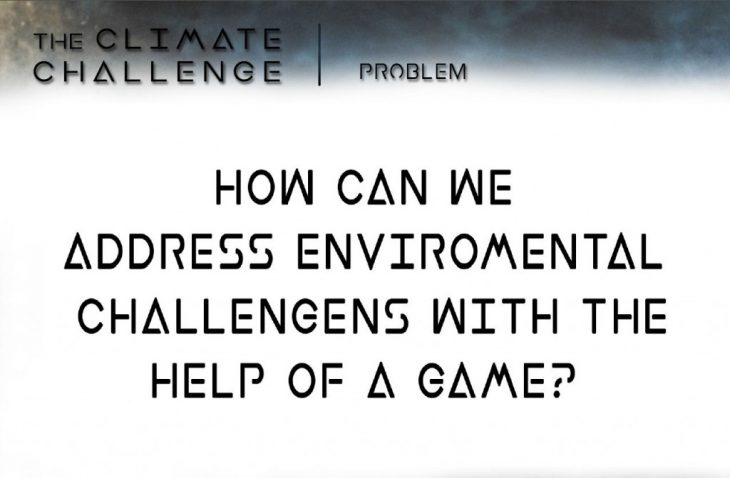
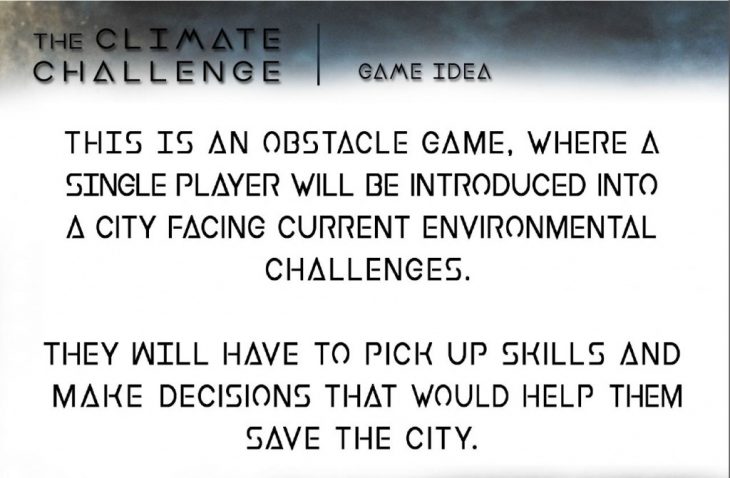
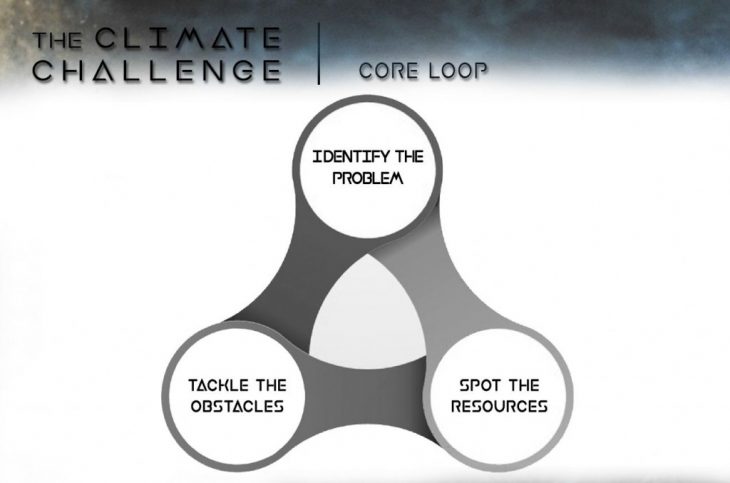
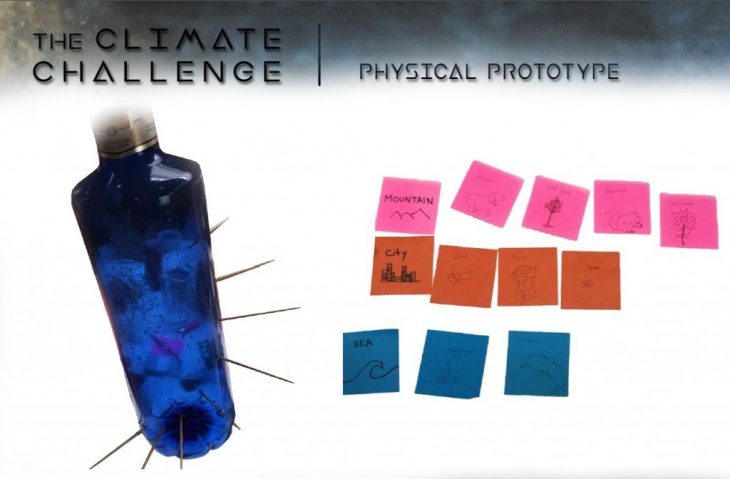
This is a primitive format of the game in third person, that demonstrates the “Cause-Effect” and “Escape Room” vibe that is targeted with this project. For the future, the intention is to develop the game in a first person point of view to be adepted to the Virtual Reality Interface.
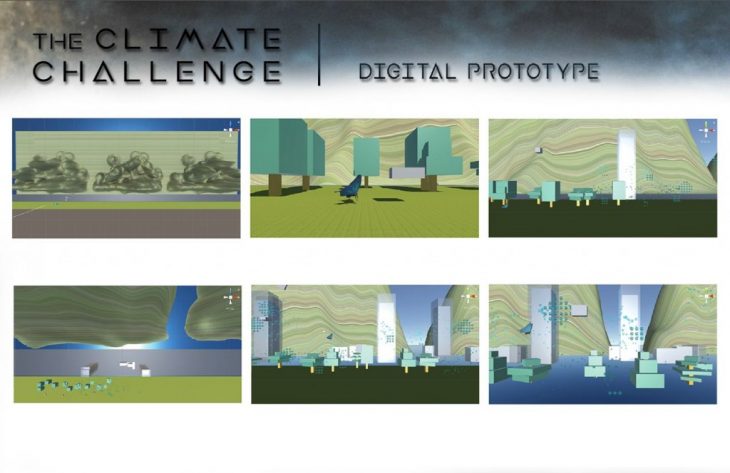
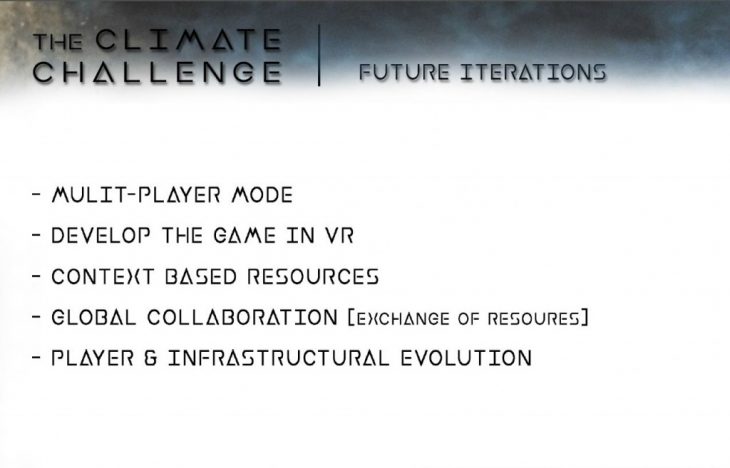
Game Flow
The objectives would range between; race, exploration and construction. The starting procedure is to rotate your head to evaluate the current surrounding.s The progressive action would be to decide on which path to take and run towards there. The player then would interact with plants or animals to acquire special skills.
The player would have to pick out an acquired skill from their chest of skills to adapt or throw at the problem to stop the issue. Other special actions would be for example if a player acquires fins from a fish they could swim under the flood water for a few seconds till they go back above ground.
Rules
The players have a limited time span. They are in a race against the progression of the environmental disasters. The players have to pick up at least 5 special skills from either plants or animals that they encounter. The player can never pass through an environmental disaster without resolving it. If a player makes the wrong decision or uses the wrong skill they lose time, and if the player performs a double fault they lose a life. Each player starts the game with three lives. Every challenge converted, the player gains an extra life. If a player finishes level without using up all of their skills, they could keep the skill for the next level
Conflict
The environmental challenge that the city is currently facing is what would be attacking the player at that current level. The obstacles would be the environmental challenges; ex, flooding, earthquakes, pollution, etc. The players’ opponents are the unfolding environmental challenges, the player would have to make decisions by picking out solutions from the set of skills that they have acquired throughout the the level to help them face the challenges.
Video
This is a video of the processes leading up to the development of the game and a clip of a the game programmed on Unity and the final outcome.
The Climate Challenge is a project of IaaC, Institute for Advanced Architecture of Catalonia.
Developed at Master in Advanced Architecture, in 2017 by Ami Nigam, Antoinette El Chidiac, Catalina Puello
Tutors: Paolo Gambardella
Faculty of Advanced Architecture.